|
|
Part of images taken with a thinned CCD Tektronics of 1024x1024 pixels by Benoit Schillings (6 minutes integration time by images with a 30-cm telescope at F/D=9).
IRIS TUTORIAL
Defringing
The image below, on the left, shows an image after a strandard preprocessing: offset, dark signal subtraction and flat-field division. The analysis of the result show that the sky background is not ideally uniform. The image of right-hand side of this same figure is the addition of 8 images of the field: the phenomenon is even more visible (note that the images were not centered before the addition).
Part of images taken with a thinned CCD Tektronics of 1024x1024 pixels by Benoit Schillings (6 minutes integration time by images with a 30-cm telescope at F/D=9). |
This bad uniformity of the background is the result interference fringes phenomena ("Fabry-Perot" type reflection), which occur in the thickness of the detector (this one is a thinned CCD Tektronics 1024x1024 - thinning is very sensitive to fringing, particularly apparent when one works in the red and infrared part of the spectrum).
The next figure shows attempts to extract the image characteristic of the fringes starting from the observation images itself.
Attempts to withdraw stars: on the left, median compositing, on the right, sigma-clipping compositing. |
On left we use the median stack. Let us suppose that the images to be treated have the generic name FIELD and that they are 8, the processing is:
>SMEDIAN FIELD 8
or, by using Add a sequence of Processing menu
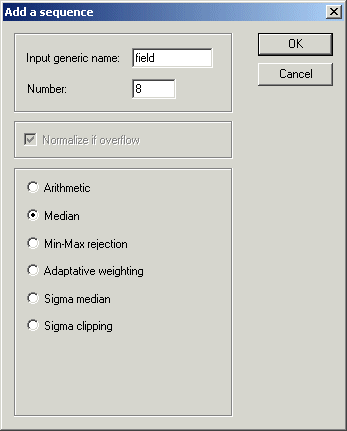
On right-hand side, we use sigma-clipping technique for eliminate stars:
>COMPOSIT FIELD 1.5 1 1 8
or, by using Add a sequence of Processing menu
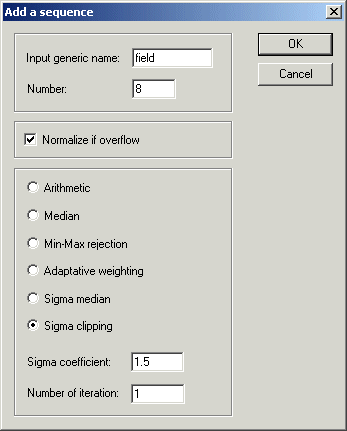
In both cases the fringes are well highlighted, but there still remains some traces of brilliant stars (the diphering between the images of the sequence is not enough high).
Command SMIN can be now a preciuous help for th situation. The command evaluate the minimal value between the same pixels of a sequence of images. Figure 3 shows the result in the case of sequence FIELD:
>SMIN FIELD 8
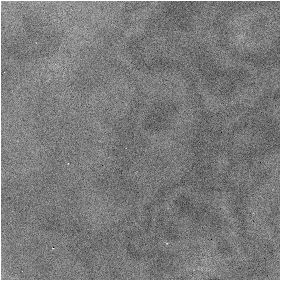
Image of the fringes after SMIN command.
The If fingres are present a preprocessing pipeline can be:
>NOFFSET2 FIELD I 1800 8 The background of the images are normalized to 1800 (for
example)
>SMIN I 8 Calculation of the
fringes map starting from the images standardized
>MEDIAN3 9 Reduction of the noise by
a median filtering (optional)
>SAVE FRINGE Save the result on the disk
>SUB2 I FRINGE I 0 8 Substraction of the fringes
map to the 8 images of the sequence
>REGISTER I I 8 Superposition of the 8 images
>ADD2 I 8 Addition of the individual frames
The image below shows the result after the processing above. No trace of fringing is visible.
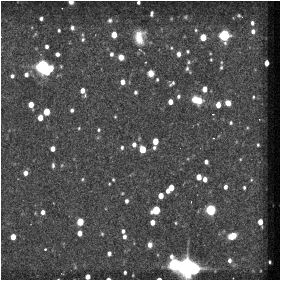
The field after the elimination of
the fringes and the compositing of the 8 elementary images.
An alternative to SMIN command is the use of the FLAT command. For the example:
>NOFFSET2 FIELD I 1800 8 The background of the images are standardized
to 1800 (for example)
>REGISTER I J 8 Centering of the image set
- necessary for generate the file SHIFT.LST
>FLAT I 2000 0 1800 3 8 Compute
the flat-field with a mean level of 1800
>SAVE FRINGE
Save the result on he disk
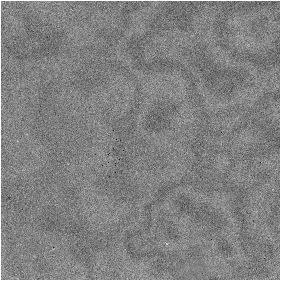
The fringe image produced by the
FLAT command.